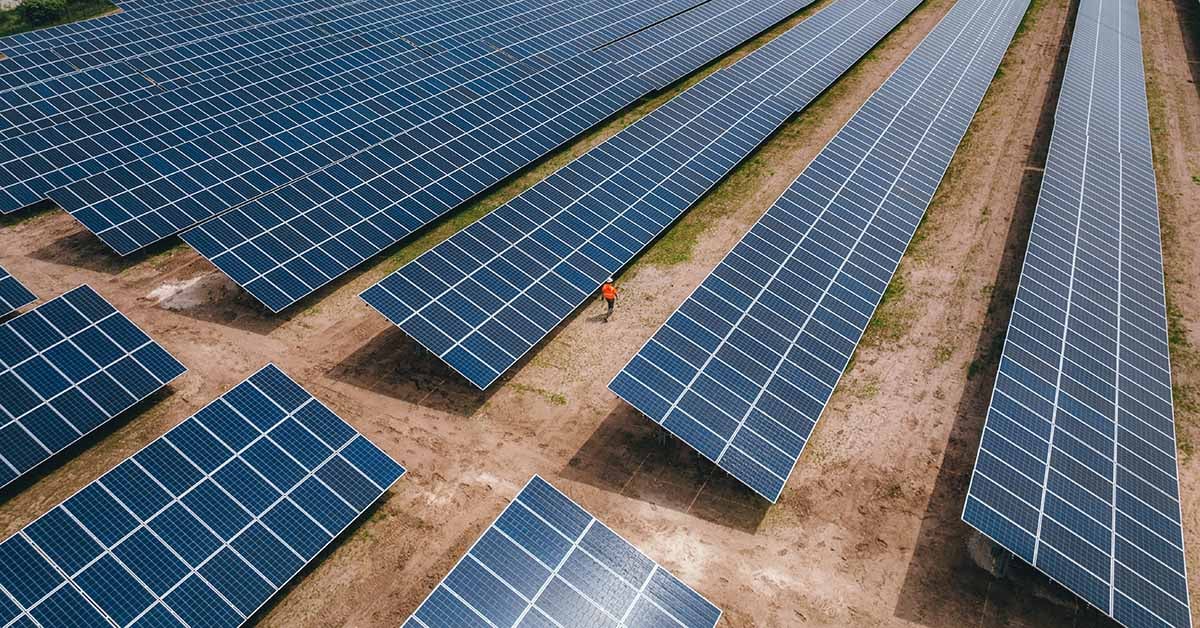Solar tax credit legislation now includes provisions for labor and wage requirements for certain projects. Find out how your business can ensure its solar project complies.
The Inflation Reduction Act (IRA), was a pivotal piece of legislation passed back in 2022 that earmarked billions of dollars of federal funds in support of climate-friendly investments such as solar. Thanks to the IRA, businesses can take advantage of a 30% federal tax credit when they install solar, with some projects eligible for even more funding.
It's important to understand that larger commercial solar projects (over 1 megawatt AC) must adhere to new labor and wage requirements to qualify for the 30% tax credit. Here we provide a detailed summary of the Department of the Treasury's guidance on these requirements in order to educate and help businesses comply.
Which solar projects are affected by the new wage and labor provisions, and what are the primary requirements?
Solar installations over 1 megawatt AC (MWAC) must meet the following wage and labor standards:
1. Pay prevailing wages for all labor and
2. Use apprentice labor if any contractor or subcontractor employs 4 or more workers onsite. Apprentices must perform 15% of labor.
Why were these provisions added?
Solar is now the largest source of new power generation in the country, and the rate of adoption among public and private entities is expected to grow expeditiously. These IRA requirements for larger projects help create and support an employment pathway that includes well-paying jobs and high-quality training, which will be important to meet current and anticipated demand.
Prevailing Wages

What are prevailing wages and how are they calculated?
A prevailing wage is the minimum wage rate paid to laborers performing construction of a solar system. A prevailing wage equals the combined total between a basic hourly wage rate and any fringe benefits (i.e. health insurance, pension plan, etc.) paid.
Prevailing wage requirements are published by the Department of Labor for specific job functions in each geographical area throughout the country.
Who must be paid prevailing wages on a qualifying solar project?
Anyone performing physical labor on the project site, including:
- Electricians
- Equipment operators
- Solar installers
- Equipment drivers
- Other laborers, including subcontractors and independent contractors
How can I ensure these requirements are met for my solar project?
System owners must rely on their solar contractor to meet these requirements and provide all necessary documentation to show that all applicable workers, including those employed by subcontractors, are paid wages that meet or exceed prevailing wage rates.
SunPeak has been a union signatory contractor since 2019 and pays prevailing wages as part of our standard construction operations. We can provide all necessary documentation required for customers to demonstrate the wage requirements for their full tax credit were fulfilled.
Apprenticeship Requirements

Apprentice labor must be used by any contractor or subcontractor with at least 4 workers employed onsite. Apprentices must perform at least 15% of the total labor hours of construction, revision, or repair work. Total labor hours exclude any hours worked by foremen, superintendents, owners, or persons employed in a bona fide executive, administrative, or professional capacity.
What is a qualified apprentice?
Qualified apprentices are individuals who are participating in a registered apprenticeship program recognized by the National Apprenticeship Act.
What are the consequences of non-compliance?
In addition to jeopardizing the tax credit, failure to comply can result in at least a $50/hour penalty (up to $500/hour for intentional disregard) for each worker hour that did not comply with the guidelines.
How can I ensure these requirements are met for my solar project?
Again, solar customers must depend on their contractor to follow these requirements and keep the necessary documentation to demonstrate that both apprenticeship labor and the appropriate apprentice-to-journeyman ratio was met for their project.
SunPeak utilizes apprenticeship labor as a standard part of our construction process and can provide all necessary documentation to customers to ensure the apprenticeship requirement and indicated ratios are met so our customers qualify for their full tax credit.
Key Takeaways

The IRA is spurring clean energy development, lower carbon emissions, and new green jobs. While the IRA requires solar projects over 1 megawatt AC to comply with new wage and apprenticeship provisions in order to qualify for the base 30% tax credit, solar customers can be confident their project complies when they choose to work with a qualified, experienced solar contractor.
SunPeak has experience working on projects where IRA wage and apprenticeship requirements apply. If you have questions on the requirements or would like additional information about solar for your project site, our project development team would be glad to assist.

